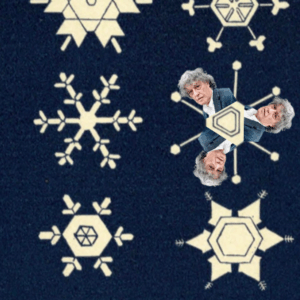
How the Advent of Modernity Shifted Our Perception of Mass Violence
Bruce Robbins Adds to the Case Against Steven Pinker
As historian Dierk Walter argues in his book, Colonial Violence, the convenient belief that “savages” and “heathens” did not regulate warfare in any way had to be invented by their imperial opponents. “The Europeans disregarded or flouted existing regional sets of rules designed to contain the conduct of war within certain limits, taking its unfamiliarity as proof of total lawlessness and consequently obeying no rules themselves, either the local ones or their own European regulations.” Scholars have revealed numerous examples among the Indigenous peoples of North America.
“According to their ways of war,” Roxanne Dunbar-Ortiz writes of the Pequots, “when relations between groups broke down and conflict came, warfare was highly ritualized, with quests for individual glory, resulting in few deaths.” “There is considerable evidence,” Jill Lepore writes, “that Algonquian standards included a distinction between concepts roughly equivalent to jus ad bellum and jus in bello. Narragansetts who fought with the English in the Pequot War, for instance, agreed with the waging of the war in the first place, but then refused to participate in acts they found unacceptable to their notions of just conduct.”
In short, the totally unscrupulous “before” in Steven Pinker’s commonly cited narrative, in which what we now call atrocity was like the weather, turns out under inspection to be as illusory as any other state of nature. Still, the idealized antithesis—premodern culture as making atrocity impossible—is just as illusory. Whatever the norms that regulated violence within a given society, it cannot be assumed that there was ever, anywhere, an adequate level of normative discouragement regarding violence against outsiders, including women and children.
In her Political Violence in Ancient India, Upinder Singh focuses on the development of an explicit “nonviolence school” in Indian thought in the sixth and fifth centuries BCE (25– 26), the influential story of Ashoka’s transformation from an exceptionally violent man into a pious Buddhist king, and the Mahabharata’s brooding over “the burdens, dilemmas, and inherent violence of kingship.” As Singh says of ancient India and even of Ashoka, scruples about the exercise of violence tend to be relaxed or forgotten in border zones, especially where so-called forest people are concerned. But forest people and border zones are precisely the issue in cases of what has to be called colonialism, modern or ancient.
Ancient colonialism, like modern colonialism, was fertile ground for atrocity, as was the recently prominent subset of colonial aggression aimed at Indigenous peoples, an aggression practiced both by Europeans and (much less noticed, but no less real) by non-Europeans, many of them victims of colonial violence themselves. What the Indian constitution recognizes as “tribals and scheduled castes,” now a political movement of their own and collaborating actively with the Indigenous peoples of other countries, have had many relevant tales to tell. Discussion of those tales has come to seem mandatory, not elective.
Humanists, however determined they may be to take a proper critical distance from the modernity-centered devastation visited upon the colonized over the last five hundred years by their colonizers, now have a responsibility to structure their conversations so that they have room for that wider spectrum of violence. But how would cultural history look if the camera were to pull back in this way?
One intriguing option comes from what Laura Doyle calls “inter-imperiality.” From Doyle’s temporally expansive viewpoint, which erases the line between premodern and modern, much history suddenly appears as a collision not between colonizer and colonized, but between two colonizers. The immediate effect is a certain demoralization of violence. It’s as if the Nahua/Aztec view of the Spanish destruction of Tenochtitlan could now be generalized—as if Europe’s desire to avoid Eurocentrism obliged its observers to adopt that demoralized view at the expense of Las Casas’s Western, moralized denunciation of the Spanish atrocities. The two empires were of course technologically inequal, but as empires, which is to say both of them based on conquest and tribute, they would have to be placed on the same moral plane.
Assuming (as we have been assuming) that premodern and modern empires can be made part of the same interrogation of atrocity, there would be nothing to choose between the moral character of the one and the moral character of the other. Morally speaking, they would cancel each other out. Even those belonging to neither empire would be trying to negotiate a position between them; being caught in the middle by no means encourages a claim to victimhood or indeed permits the invention of an anti-imperial identity. Even with regard to mass violence, the moral dimension disappears. Atrocity becomes universal. It is again like the weather. Which is to say that it too disappears.
Even with regard to mass violence, the moral dimension disappears. Atrocity becomes universal.
If moral progress is a fairy tale, just as the originary pacifism of the Moriori is, the reality, we might logically conclude, is that we are all Maori, conquering and massacring with more or less success and, if challenged, attributing the conquests and massacres to our customs, our culture, our need to preserve our identity. That is the Nietzschean temptation that Mitchell throws his unconvincing Moriori in the face of. And it is one way of judging the concept of inter-imperiality—no doubt a judgment that pushes the concept farther than it wants to go, but useful at least as a warning.
Doyle struggles valiantly to retain some moral purchase on history. She shines a light on scattered moments of slave revolt and proto-feminist and anti- imperial protest. But the main players in her game are empires, and the overwhelming momentum of her coinage goes in the opposite direction: toward a vision of history in which, because one empire is pitted against another, no participant in the conflict has a moral advantage over anyone else. If there is no moral division between perpetrator and victim, then in the strict sense there is no atrocity.
Hence a great deal of this revisionist history has a whitewashed feel, as if violence, though everywhere, played no major part in it or, when it did, as if the violence was not something of any moral significance. It’s a conclusion that would not have been out of place (among Europeans) in the heyday of European imperialism, when any violence could be downplayed or justified in the name of winning the competition with rival powers, a competition that was inevitable. And it’s a conclusion that has a certain appeal in the realist/nihilist climate of the twenty-first century, when all claims to moral judgment are vulnerable to the Nietzschean charge of camouflaging a universal impulse to imperial domination that has never abated and should not be expected to abate.
The alternative I have been gently suggesting is to embrace the indignant history of the invention of the atrocity as a moral achievement, however tainted every stage in its development may be. Otherwise, so I have suggested, the victims of violence risk dropping out of the historical record.
I would not argue that humanists are obliged to display the violent sufferings of the past in brightly lit exhibits, the blood and guts as vividly gruesome as the day bodies were hacked to pieces. But whitewashing the violence out of world history has its own dangers. The common sense about historical atrocity that takes the place of crude blaming is interesting in its own right, and perhaps even consequential in terms of what it might teach if it is extended (and why would it not be?) from atrocity in the past to atrocity in the present.
One form it takes is erasure of the line between premodern and modern. If you erase that line, as Doyle does, you also erase the invention or discovery of atrocity as a moral scandal. It seems a high price to pay, but many hardly notice how much is being deducted from their accounts. Because the traditional rationale of the humanities has involved the resuscitating of texts that have been forgotten or have lost their primary audiences or have otherwise been lost to the present, because humanists’ work has seemed to require undoing time’s work of dissolution, the humanities have always been strangely uncritical of the tacit assumption that the passage of time never results in any sort of improvement or accomplishment, even improvement in attitudes toward the massacre of noncombatants.
The entirely laudable impulse to avoid Eurocentrism has offered cover for new versions of this old assumption. Modernity, assumed to be the highest state achieved by human society, and modernism, its cultural embodiment, have of course served as a rich source of undeserved cultural capital and moral smugness for the West, a reason for envy on the part of those anywhere else in the world who see themselves, or feel they are seen by others, as not yet having achieved them. It is understandable, then, to want to divest from the concepts, as critic Susan Stanford Friedman does in her book Planetary Modernisms: Provocations on Modernity across Time. It is a myth, Friedman argues, that, thanks to a unique evolutionary trajectory, the West was ever the exclusive possessor of modernity. Modernity should be seen, rather, as a recurrent phenomenon. It is defined by nothing more than moments of accelerated change. It has happened again and again, outside as well as inside Europe. If modernity is so spread across time and space, no one need feel hurt that they are being excluded from it.
The alternative I have been gently suggesting is to embrace the indignant history of the invention of the atrocity as a moral achievement.
The obvious problem here is that if modernity is everywhere, we lose sight of its virtues, which cannot be virtues, that is, worth articulating, propagating, and treasuring, unless they are not everywhere. And if those virtues are not equally distributed in every time and place, then Friedman is back where she started—valuing some times and places at the expense of others. Friedman tells us that there are multiple modernities, each of them a moment of accelerated technological and social change. But if so, each of her modernities would transmit exactly the same message to its own “tradition” or “before” (the message that I’m better than you are) that Friedman finds unacceptable when transmitted to non-Western “tradition” by Western modernity’s “after.”
Each “tradition” would have the same grounds for complaint. Each would have the same right to demand a better grade, the right that critic Susan Stanford Friedman acknowledges in relation to countries, cultures and periods. One way or the other, modernity, singular or plural, is going to hurt someone’s feelings. Everyone cannot be morally above average. Change is not always for the better, but once you decide what is better, for example when the change involves disapproval of atrocity, you are entitled to decide, after proper scrutiny, where more of that sort of change has happened and where it hasn’t.
Making that decision does not commit you to inhabiting the domain of triumphalist myth. Surely it is better to ignore everyone’s feelings, whether hurt (tradition) or puffed up with false pride (modern) and instead try as hard as possible to ascertain what has actually happened in history, for better or for worse. Friedman’s assumptions ensure that her version will not be reliable on what has actually happened in history. Among other reasons, because in seeking to avoid Eurocentrism, she does her diplomatic best to ignore the violence that accompanied non-Western as well as Western cultures and empires. Military violence is not totally absent from her account, but it is very close to invisible.
In the case of the Mongol Empire, say, this is quite a feat, though the tide of educated opinion has swung forcefully toward a recognition of Mongol accomplishments. Matthew White ranks Genghis Khan second in the all-time list of atrocity-makers with approximately 40,000,000 dead. He does this although he, like Friedman, is something of a fan of Chinese imperial unification. (Order is better than chaos.) The closest Friedman comes to a statement on imperial coercion is as follows: “Empires typically intensify the rate of rupture and accelerate change in ways that are both dystopic and utopic.” What Friedman calls “brutalities” can of course be recognized, but only as a general phenomenon that (1) is balanced in advance by the “utopic” aspects of empire, and in part for that reason, (2) is in no way interesting or worthy of being investigated further.
__________________________________

Excerpted from Atrocity: A Literary History by Bruce Robbins, published by Stanford University Press. Copyright © 2025 by Bruce Robbins. All rights reserved.
Bruce Robbins
Bruce Robbins is Old Dominion Foundation Professor in the Humanities at Columbia University. He has authored several books, among them Criticism and Politics: A Polemical Introduction (Stanford, 2022).



















